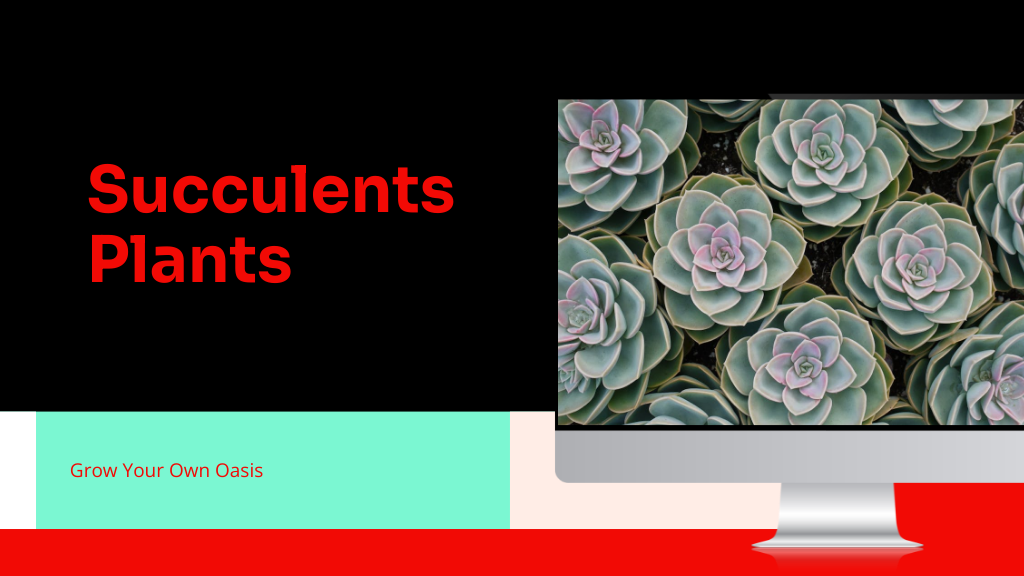
Caring for succulents plants is straightforward once you grasp their basic needs. You’ll need a well-draining soil mix, ideally comprising potting soil, coarse sand, and perlite, to guarantee they’re not sitting in moisture, which can lead to root rot. Place them in a spot that gets about six hours of direct sunlight a day, and rotate them regularly to promote even growth. Water only when the soil is completely dry, using the “soak and dry” method, especially during their active growing season. Check for pests frequently and use a diluted balanced fertilizer sparingly. There’s more to explore that can help you master succulents plants care.
- Understanding Succulent Types
- Ideal Lighting Conditions
- Proper Watering Techniques
- Selecting the Right Soil
- Temperature Requirements
- Managing Pests Effectively
- Fertilization Strategies
- Pruning and Maintenance
- Propagation Methods
- Common Issues and Solutions
- Creative Planting Ideas
- Frequently Asked Questions
- Conclusion
Understanding Succulent Types
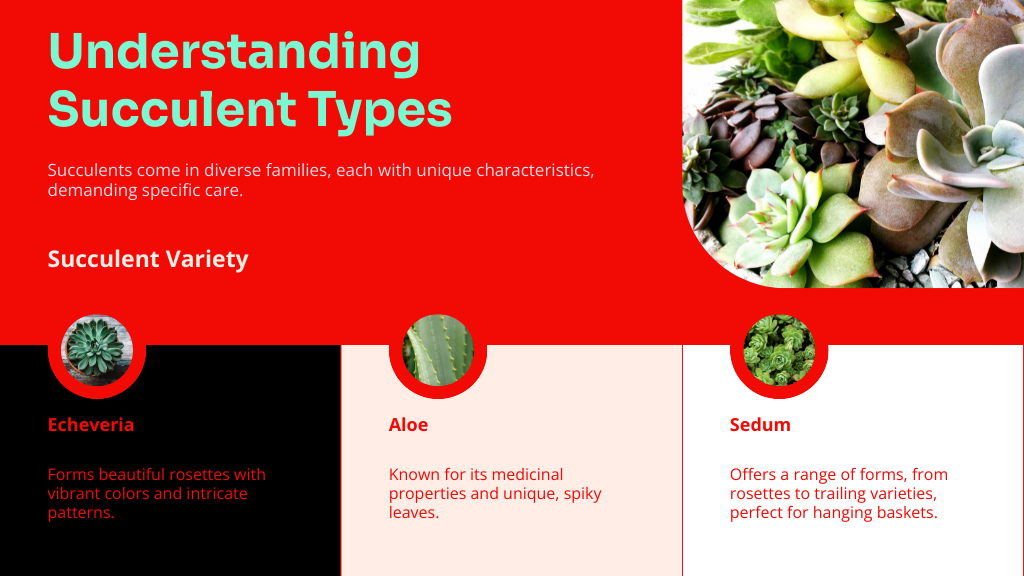
Succulents belong to over 60 diverse families, each with unique adaptations that allow them to thrive in different environments. Understanding the distinct succulent types is key to their proper care. Families like Echeveria, Aloe, and Sedum offer a range of forms and functions. For instance, Echeveria forms beautiful rosettes, while Sedum morganianum trails elegantly, perfect for hanging baskets.
When you’re caring for these diverse plants, consider their individual needs. While some succulents like full sunlight, others, such as Haworthia, can handle lower light, making them ideal for indoor settings. However, all succulents demand well-draining soil to prevent root rot. This is essential because their roots are adapted to arid conditions where water is scarce.
To guarantee your succulents flourish, don’t just water them on a fixed schedule. Instead, check the soil’s moisture. Water only when it’s completely dry. Over-watering is a common mistake, but with proper drainage and the right watering technique, you’ll keep your succulents healthy.
Ideal Lighting Conditions
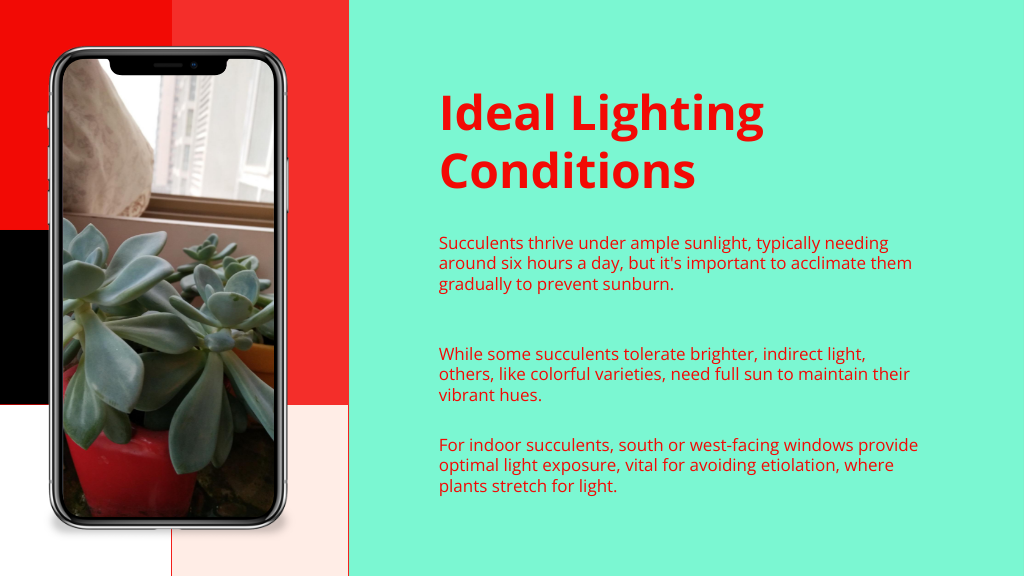
To keep your succulents healthy, you’ll need to understand their light needs. They generally require about six hours of direct sunlight daily, but you should gradually introduce them to this to avoid sunburn. If you’re keeping them indoors, placing them near south or west-facing windows guarantees they get enough light.
Optimal Light Intensity
About six hours of direct sunlight a day is typically what your succulents need to maintain their vibrant colors and overall health. When caring for succulents, understanding their light requirements is essential. For instance, while green and variegated varieties thrive under bright, indirect light, your colorful succulents demand full sun to keep their hues vivid.
If you’re growing indoor succulents, positioning them near south or west-facing windows will maximize their light intake, vital for avoiding etiolation, where plants stretch unnaturally due to insufficient light. Be mindful that the shift to full sun should be gradual for new succulents to prevent sunburn, appearing as unsightly beige or brown patches on the foliage.
To guarantee all parts of your succulent receive equal exposure and prevent them from leaning towards the light source, it’s smart to rotate them every couple of weeks. This simple step in succulent care guarantees even growth and contributes to the overall well-being of your plants.
Sunlight Exposure Duration
Most succulents require between six to eight hours of direct sunlight each day to flourish and maintain their vibrant colors. This ideal sunlight exposure duration helps your plants stay healthy, encouraging robust growth and the development of rich, vivid hues. However, if you’re in a particularly hot climate, you might need to adjust the exposure to avoid leaf scorch.
While direct sunlight is essential, many succulents also thrive under bright, indirect sunlight. This is especially true for indoor succulents, which you should position near south or west-facing windows to capture the most light. This placement helps prevent etiolation, where succulents stretch unnaturally due to insufficient light.
If you’ve just brought home some new succulents, it’s best to gradually introduce them to full sunlight. Start by exposing them to milder morning sun, then gradually increase their exposure to prevent any potential sunburn. For those with less-than-ideal lighting conditions, don’t worry. Low-light tolerant succulents like Haworthia and ZZ plants can still thrive. These varieties need less intense light but should still be placed in the brightest areas of your home to keep them happy and healthy.
Indoor Lighting Solutions
If you’re aiming to keep your succulents vibrant and healthy indoors, finding the right lighting setup is vital. As indoor plants, succulents thrive under specific light conditions that mimic their natural arid habitats. Ideally, you’ll want to provide them with bright indirect sunlight. This guarantees they receive enough light without the harsh effects of direct rays that can lead to scorched leaves.
To optimize the lighting for your succulents, consider these key strategies:
- Place near south or west-facing windows: These locations generally offer the best light exposure throughout the day, essential for your succulents to flourish.
- Use sheer curtains to diffuse direct sunlight: This helps prevent scorching while still allowing plenty of light.
- Rotate your plants regularly: Every couple of weeks, give your plants a little turn. This promotes even light exposure and prevents them from leaning towards the light source.
- Adjust for seasons: Light intensity can vary with seasons; be adaptable in how you position your plants, especially during shorter winter days.
Proper Watering Techniques
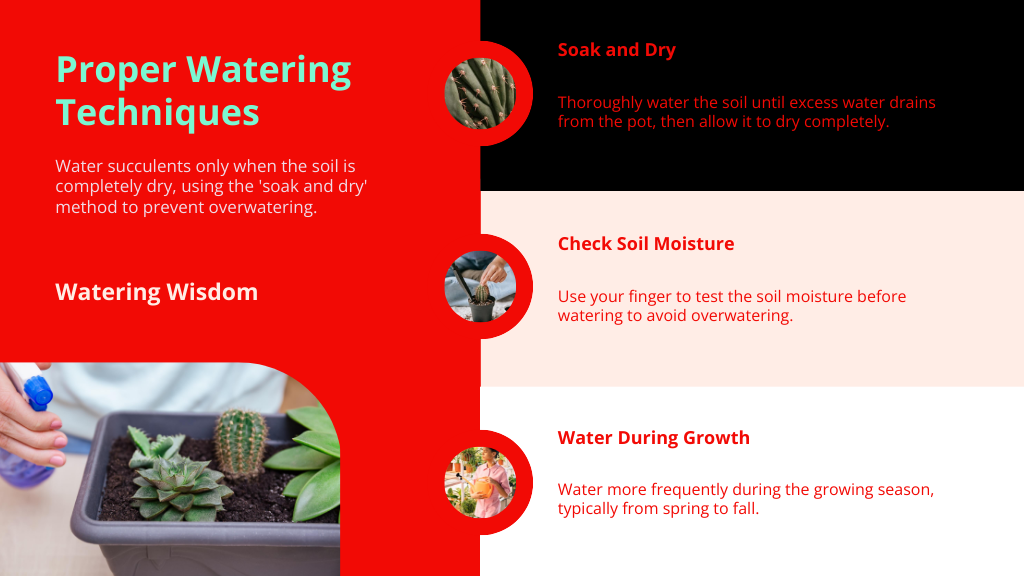
Understanding how to water your succulents properly is essential for their survival and overall health. You’ll want to water your succulents only when the soil is completely dry, which is typically every 2-3 weeks during the growing season. In the winter, when your plants enter a dormant phase, you should cut back on watering.
Employ the “soak and dry” method to guarantee proper hydration without waterlogging. Thoroughly water the soil until you see excess water draining from the bottom.
This method helps maintain the right moisture level in the soil and promotes healthy root growth. Always check the top 1.25 inches of soil before watering; if it feels dry, it’s time to give your plants a drink. If it’s still moist, though, hold off for a few more days.
Selecting the Right Soil
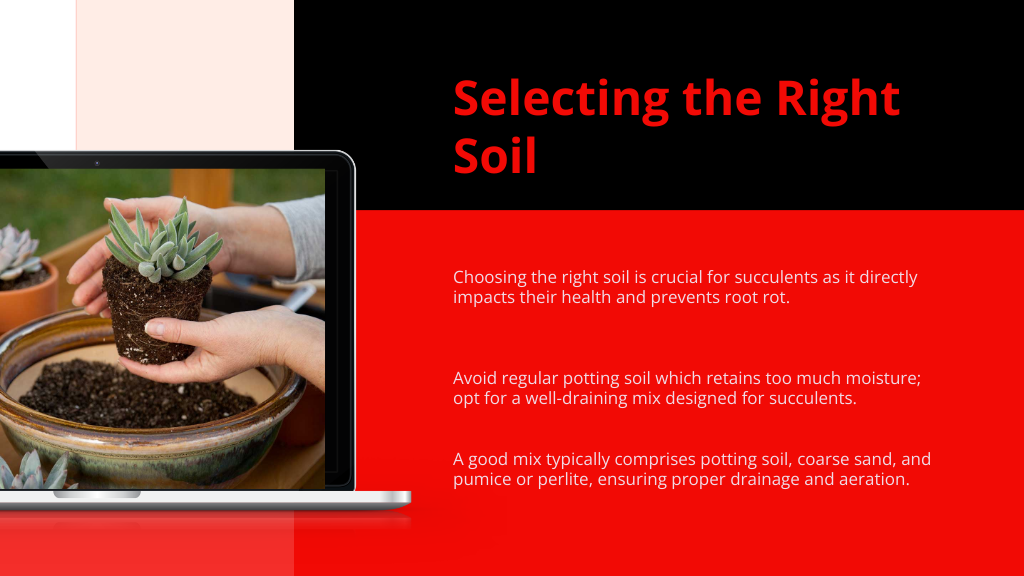
Why is choosing the right soil crucial for your succulents? The health and energy of your succulents largely depend on the type of soil mix they’re planted in. Succulents need a specific kind of succulent soil that prevents moisture retention, which can otherwise lead to root rot and other problems.
Here’s how you can make certain you’re on the right track:
- Well-draining soil mix: Opt for a soil mix that’s designed for succulents. Regular potting soil retains too much moisture for succulents. Instead, a mix of potting soil, coarse sand, and pumice or perlite guarantees proper drainage and aeration.
- Check the pH levels: Succulents thrive best in soil with a slightly acidic to neutral pH. This pH balance supports healthier growth.
- Renew the soil: Over time, soil can accumulate salts that may harm your plants. Renewing or replacing the soil mix every couple of years can provide fresh nutrients and prevent salt buildup.
- Containers with drainage holes: Always use pots with drainage holes. These allow excess water to escape, preventing any harmful water accumulation at the bottom of your plant’s container.
Temperature Requirements
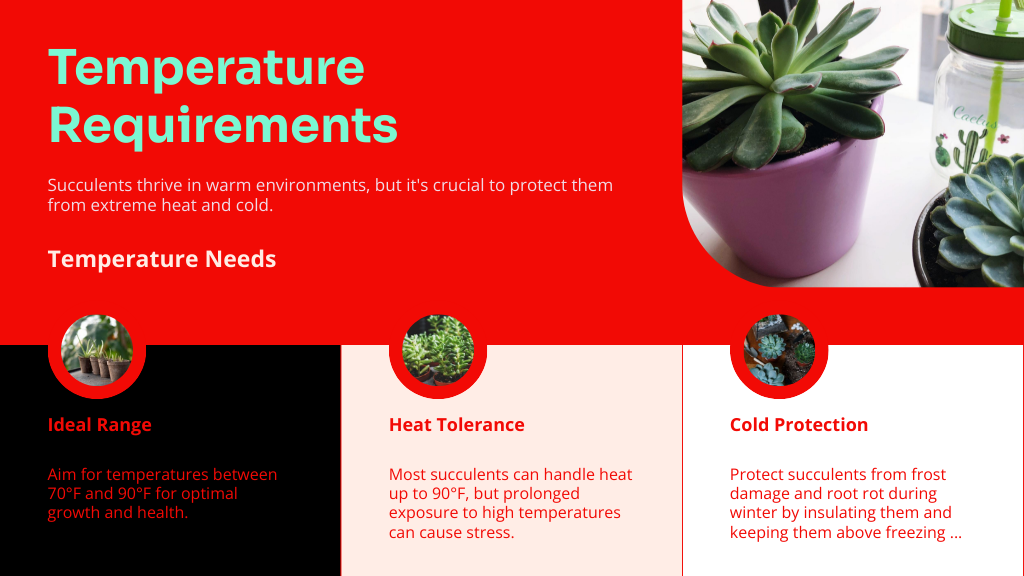
Understanding the ideal indoor temperatures for your succulents is vital to guarantee they thrive. They generally prefer warmth, but you’ll need to know how much heat each variety can tolerate without stress. When winter approaches, it’s important to protect them from the cold to prevent damage.
Ideal Indoor Temperatures
When setting up your indoor garden, it’s vital to keep in mind that succulents prefer temperatures between 70°F and 90°F. These ideal indoor temperatures mimic the arid climate where succulents naturally thrive. It’s important to maintain this range to guarantee your succulents grow healthy and vibrant.
Here are a few tips to manage indoor temperatures effectively:
- Monitor and Adjust: Regularly check the indoor temperatures, especially during seasonal changes. Use heating in winter and air conditioning or fans in summer to maintain the best range.
- Avoid Cold Drafts: In colder months, position your succulents away from windows that might leak chilly air, as prolonged exposure to cold can be detrimental.
- Prevent Overheating: Although succulents can handle warmth, avoid placing them near heat sources like radiators, as prolonged exposure to high heat can cause stress.
- Stabilize Temperature: Try to minimize temperature fluctuations; sudden changes can shock succulents and affect their growth.
Heat Tolerance Levels
Most succulents are well-suited for warm environments, thriving in temperatures between 70°F and 90°F. In these conditions, they flourish, showing off vibrant colors and healthy growth.
However, it’s essential to understand their heat tolerance to keep them in prime condition. While they handle heat well, the threshold for most succulents is around 90°F. Beyond this, especially when humidity couples with high temperatures, your succulents might struggle. They can become more susceptible to issues like overwatering, as their ability to evaporate moisture decreases.
During peak heat, particularly in summer, succulents can suffer from heat stress. This might manifest as sunburn, where leaves develop discolored patches or turn crispy. To prevent such damage, consider positioning your plants where they can receive filtered sunlight during the harshest afternoon rays. Implementing proper temperature management isn’t just about avoiding the cold. It involves protecting your succulents from excessive high temperatures too.
Even cold-hardy succulents, which can withstand as low as 32°F, need protection from extreme heat. So, don’t forget to provide some shade and perhaps a bit of extra ventilation to help combat the stress of high temperatures, ensuring your succulents stay as stunning as ever.
Cold Weather Protection
How do you guarantee your succulents survive the chill of winter? When temperatures drop, your beloved plants face the risk of frost damage and root rot, especially if they’re not suited to cold weather. It’s vital to understand their needs during dormancy to make sure they thrive when spring arrives.
Succulents generally struggle with cold, but certain steps can bolster their cold weather protection:
- Choose the right species: Opt for cold-hardy varieties like fine-leaved stonecrops and hens and chicks, which are more resilient against lower temperatures.
- Maintain a stable temperature: Keep your succulents in an environment that stays between 50°F and 60°F to prevent stress and damage during their dormant period.
- Insulate outdoor plants: If a sudden freeze is forecasted, cover outdoor succulents with frost cloths or blankets to shield them from extreme cold.
- Avoid wet conditions: Make sure that your succulents aren’t left in damp soil, which can exacerbate the cold’s impact and lead to root rot.
Managing Pests Effectively
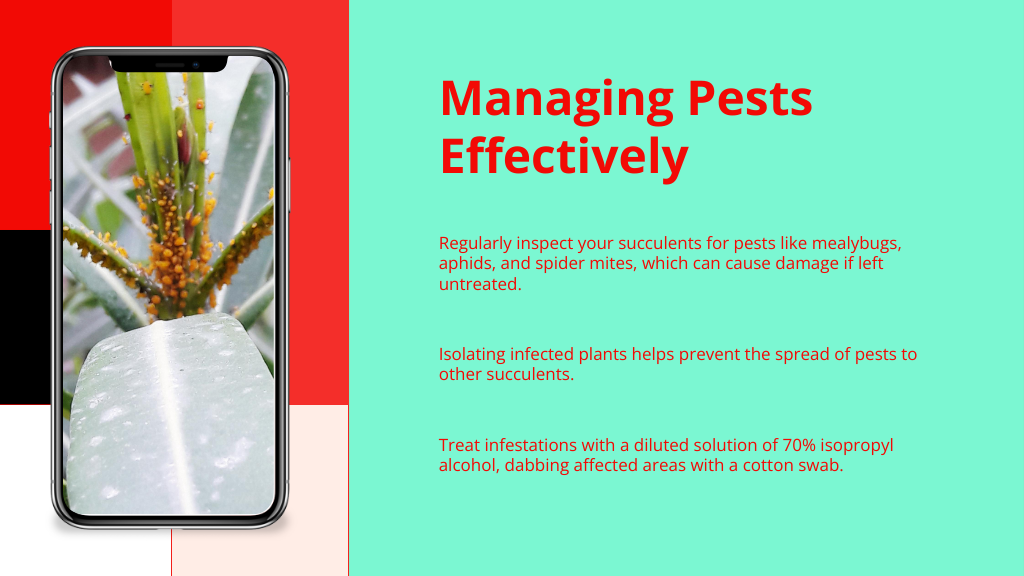
Regularly checking your succulents for pests like mealybugs, aphids, and spider mites is vital to maintaining their health. These pests can wreak havoc if they’re not addressed promptly.
To tackle an infestation, you’ll need to isolate the affected plants first. This prevents the pests from spreading to your other succulents. Once isolated, treat the pests directly by dabbing them with 70% isopropyl alcohol using a cotton swab or by spraying the affected areas. This method is highly effective and immediate.
Maintaining good air circulation around your succulents is also essential. It not only helps in keeping the pests at bay but also promotes healthier growth. Make sure your plants aren’t crowded together and that air can freely circulate around them.
Overwatering is another common issue that invites pests. Succulents thrive in dry conditions, so be certain to let the soil dry out completely between waterings. Excess moisture can create a breeding ground for pests and diseases.
If alcohol treatment isn’t enough, consider using horticultural soap or neem oil as alternative treatments. These options are gentle on the plants but tough on pests, guaranteeing your succulents stay healthy and vibrant.
Fertilization Strategies
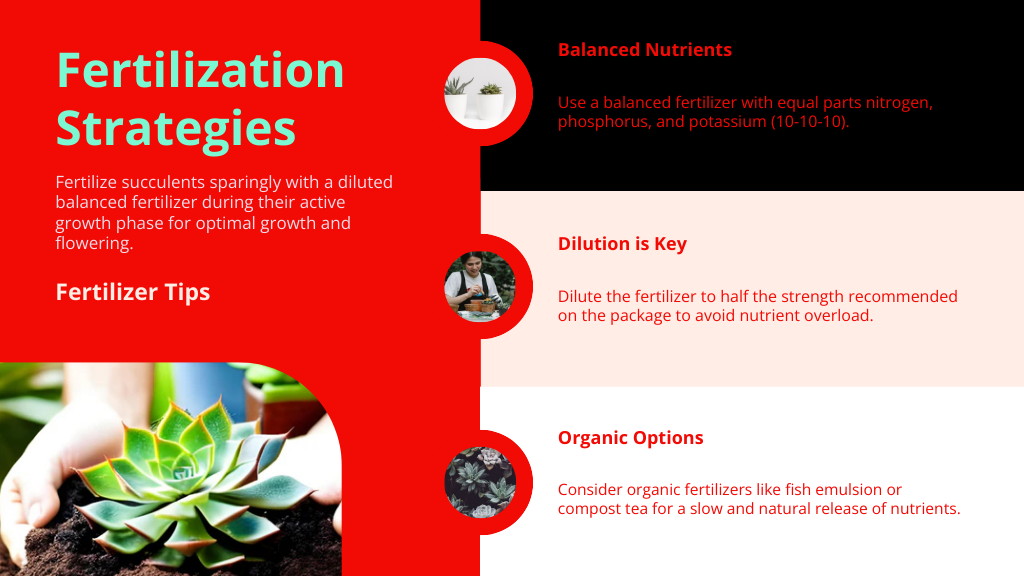
Fertilizing your succulents properly enhances their vibrant growth and overall health, particularly during their active growth phase from spring through fall. During this period, they’re ready to absorb nutrients that fuel their development and flowering.
Here’s how to approach fertilization to guarantee your succulents thrive:
- Choose the Right Fertilizer: Opt for a balanced fertilizer with equal parts nitrogen, phosphorus, and potassium (e.g., 10-10-10). This composition supports all-around health and robustness in your succulents.
- Dilution is Key: Always dilute your balanced fertilizer to about half the strength recommended on the package. Succulents are sensitive to excess nutrients, which can harm their growth and may lead to salt accumulation in the soil.
- Consider Organic Options: Organic fertilizers like fish emulsion or compost tea are excellent alternatives. They provide nutrients at a slower, more natural rate, which is ideal for succulents.
- Refresh the Soil: Every couple of years, it’s beneficial to refresh the soil to remove any salt buildup from fertilization and to replenish nutrients that have been depleted over time.
Pruning and Maintenance
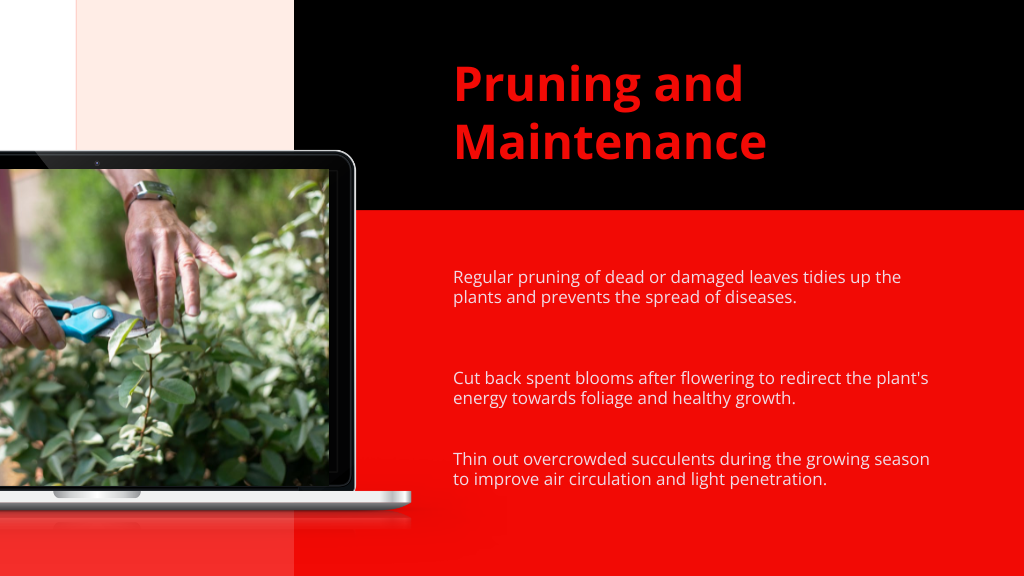
To keep your succulents looking their best, start by pruning away any dead or damaged leaves. This not only tidies up your plants but also prevents the spread of diseases that can thrive on decaying plant matter. Use clean, sharp scissors or pruning shears for this task to guarantee precise cuts that won’t unnecessarily stress your plants.
After you’ve removed the dead leaves, check for any spent blooms. Cutting these back after they’ve flowered redirects the plant’s energy towards producing robust, healthy foliage rather than seeds. This is a significant step in maintaining the visual appeal and liveliness of your succulents.
Moreover, during the active growing season, typically in spring or early summer, it’s imperative to thin out your succulents if they appear overcrowded. This promotes better air circulation and light penetration, both of which are fundamental for the health of your plants.
Proper pruning during this period encourages a burst of fresh growth and helps establish a more vibrant and resilient succulent collection. Remember, regular maintenance not only enhances the appearance of your succulents but also bolsters their overall health.
Propagation Methods
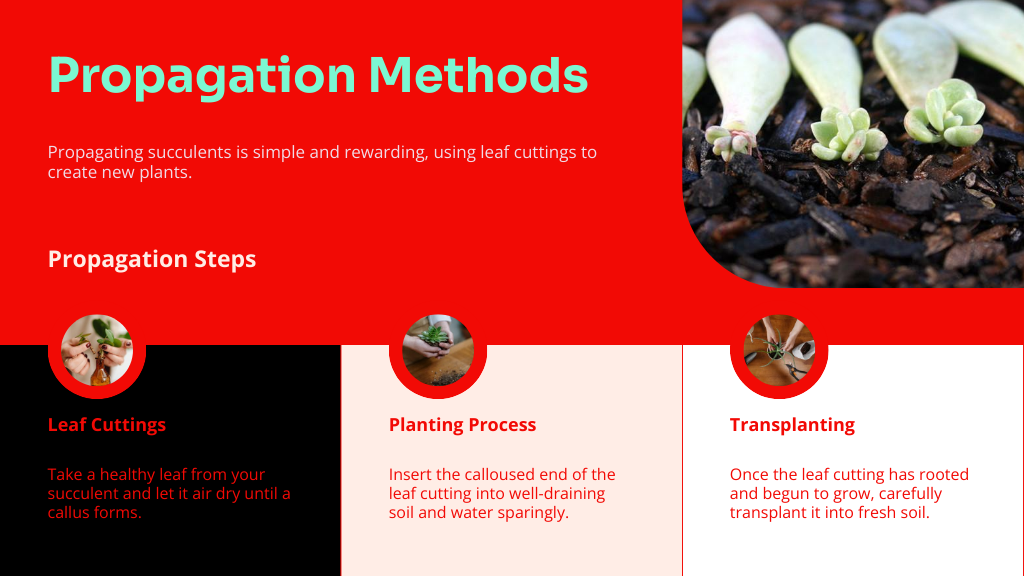
After mastering the basics of pruning and maintenance, you might be ready to expand your succulent collection through propagation. Propagation methods for succulents aren’t only simple but also quite rewarding. Here’s how you can start creating new plants from your existing ones. Firstly, using clean scissors, carefully cut a healthy leaf from your succulent. It’s important that the entire leaf, including the base, is intact for the best results.
Once you’ve got your leaf cuttings, follow these steps:
- Allow cuttings to air dry: Let the leaves dry for a few days until a callus forms over the cut surface. This step is essential to prevent rot when planted.
- Prepare well-draining soil: Use a mix specifically designed for succulents or make your own with equal parts sand, potting soil, and perlite.
- Plant the leaves: Insert the callused end slightly into the soil. Water sparingly until roots appear to avoid waterlogging.
- Transplanting succulents: Once your new succulents develop roots and begin to grow, transplant them carefully into fresh, well-draining soil, maintaining the same depth as before.
Regular repotting with fresh soil annually is necessary to support the healthy growth of your propagated succulents.
Common Issues and Solutions
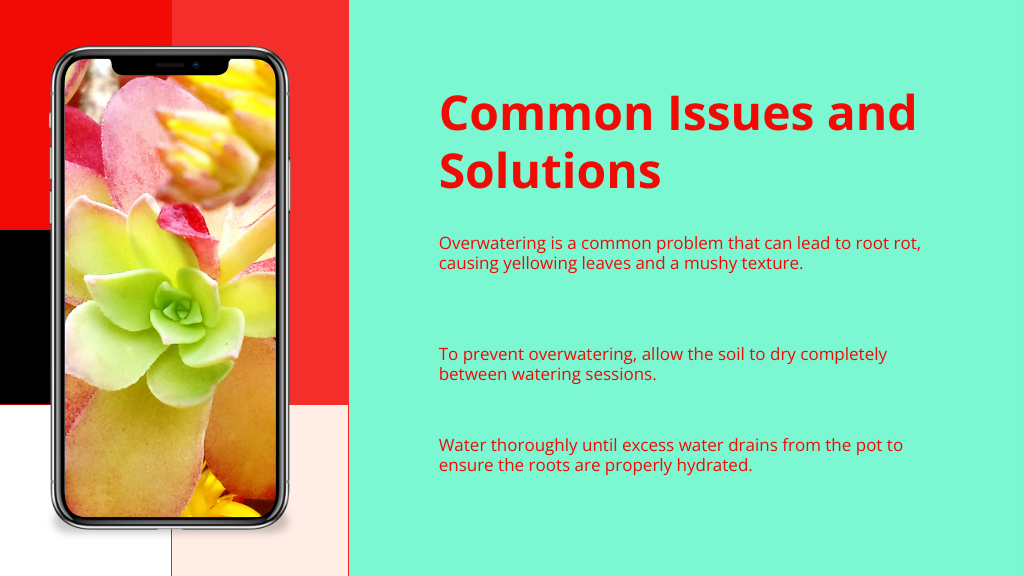
While succulents are generally easy to maintain, they’re not immune to problems, particularly when it comes to watering. Overwatering is the top culprit you’ll encounter. If you start noticing yellowing leaves or a mushy texture, it’s time to reassess how you water your succulents. These symptoms often signal the onset of root rot, a serious condition that can kill your plant if not addressed quickly.
The key to preventing these issues is to let the soil dry completely between waterings. Succulents store water in their leaves, allowing them to withstand dry periods better than other plants.
Stick your finger about an inch into the soil; if it’s dry, it’s time to water. When you do water, do so thoroughly until water flows out of the drainage holes of the pot, then stop. This method guarantees the roots get enough water without becoming waterlogged.
Creative Planting Ideas
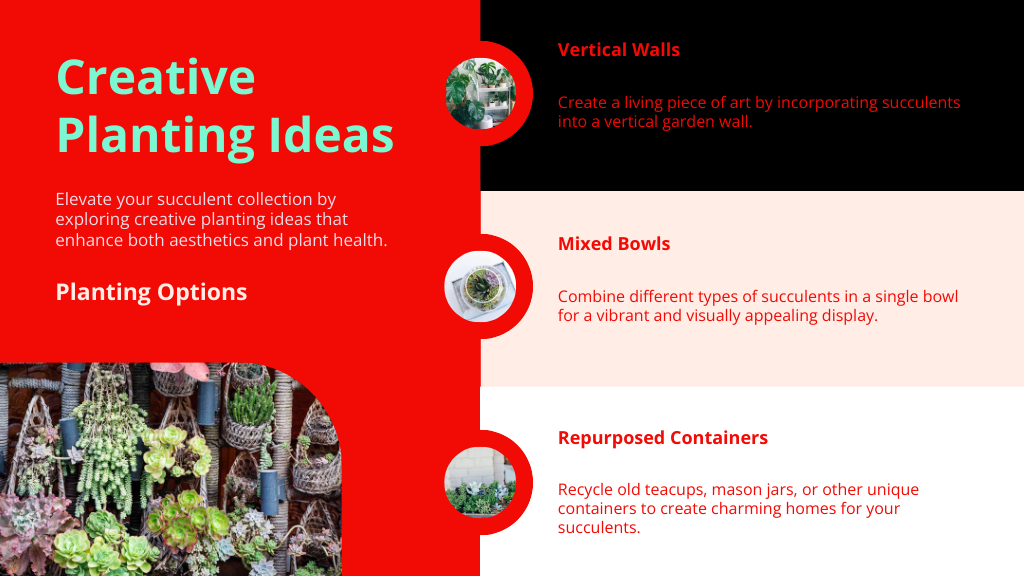
You can elevate your succulent collection by exploring creative planting ideas that not only enhance your home‘s aesthetics but also cater to the plants’ needs. Consider a vertical garden wall that turns your succulents into a living piece of art, or mix different types and sizes in a single bowl for a striking display. If you’re into recycling, repurposed containers like old teacups, mason jars, or even retired books can become charming homes for your plants.
Vertical Garden Walls
Vertical garden walls offer a space-saving solution that lets your succulents flourish even in the smallest areas. When setting up your vertical garden, it’s vital to focus on succulent care to guarantee your green wall thrives. First, you’ll need a well-constructed frame that includes efficient drainage systems to prevent water from pooling, which can be detrimental to your plants. Choosing well-draining soil is essential; a mix of potting soil with sand or pumice optimizes drainage and aeration, creating an ideal environment for succulent roots.
To make your vertical garden truly stand out, consider these creative planting ideas:
- Diverse Plant Selection: Combine succulents like Echeveria, Sedum, and Haworthia for a vibrant mix of colors, sizes, and textures.
- Sunlight Positioning: Guarantee the vertical garden is located where it can receive adequate sunlight, ideally between 6-8 hours a day, to maintain the health and color vibrancy of the succulents.
- Layering Techniques: Arrange your succulents in tiers or patterns that enhance the visual depth and interest of your garden.
- Seasonal Updates: Swap out or add new succulents seasonally to keep the display fresh and engaging.
Mixed Succulent Bowls
Crafting mixed succulent bowls adds a touch of nature’s artistry to your home or office. Start by selecting a variety of plants that share similar light and watering requirements, such as Echeveria, Sedum, and Aloe. This guarantees all your plants thrive together without extra hassle.
For your potting mix, blend well-draining soil mix with sand and a bit of pumice. This combination prevents water from pooling at the roots, which can cause rot. It’s essential for succulent owners to get this right, as proper drainage greatly impacts plant health.
Place decorative stones or gravel on top of the soil. Not only do these elements enhance the bowl’s aesthetics, but they also help maintain the right moisture level in the soil, preventing it from becoming too damp or too dry.
When arranging your succulents, consider their growth patterns. Position taller or trailing varieties like Jade Plant or String of Pearls at the back or sides of the bowl. This allows them to gracefully spill over without overshadowing shorter species positioned in the front.
Finally, remember to water your arrangement thoroughly yet infrequently, allowing the soil to dry out completely between watering sessions. This mimics the natural arid conditions most succulents love.
Repurposed Container Gardens
Many repurposed containers, from quaint old teacups to rustic wooden crates, can become unique and stylish homes for your succulents. By using these creative vessels, you’re not only recycling but also adding a layer of personal charm to your indoor or outdoor spaces.
You’ll need to verify these repurposed containers have adequate drainage holes to keep your succulents healthy. If they don’t, you might need to drill some yourself to prevent water from pooling at the bottom.
When you personalize your container gardens, you’re crafting a space that truly reflects your style. Here’s how you can maximize the appeal and functionality of your repurposed containers:
- Drill or create drainage holes: Essential to prevent root rot, especially important in non-traditional planters.
- Enhance drainage with a base layer: Add a layer of stones or gravel at the bottom to improve water flow.
- Mix and match containers: Use various sizes and shapes to create visual interest and a dynamic display.
- Decorate your containers: Paint or adorn them to match your decor, making each piece a reflection of your personality.
These steps will help your succulents thrive and turn your repurposed containers into eye-catching elements of your home or garden.
Frequently Asked Questions
What Is the Trick to Keeping Succulents Alive?
To keep your succulents alive, you’ll need well-draining soil, infrequent watering, and plenty of sunlight. Make certain they’re not overwatered and protect them from extreme temperatures to maintain their health and vibrant appearance.
How Do You Take Care of Potted Succulents?
To care for your potted succulents, water them only when the soil’s dry, usually every 2-3 weeks. Make certain they get bright, indirect light, and use well-draining soil with a pot that has drainage holes.
Why Do Succulent Leaves Fall Off?
Your succulent leaves may fall off due to overwatering, insufficient light, pest infestations, sudden temperature changes, or natural aging. Addressing these issues can help prevent further leaf loss and promote healthier growth.
What Makes Succulents Happy?
To make your succulents happy, guarantee they’re in well-draining soil, get plenty of indirect sunlight, and are watered only when the soil is dry. They thrive with minimal fuss and moderate temperatures.
Conclusion
Now that you’ve explored the essentials of succulent care, you’re all set to start your own vibrant collection. Remember, these resilient plants thrive with minimal fuss—just provide them with the right light, a bit of water, and proper soil. Don’t hesitate to experiment with creative planting ideas and propagation. If you run into any issues, just refer back to the common solutions provided. Enjoy watching your succulents flourish and bring life to your space!
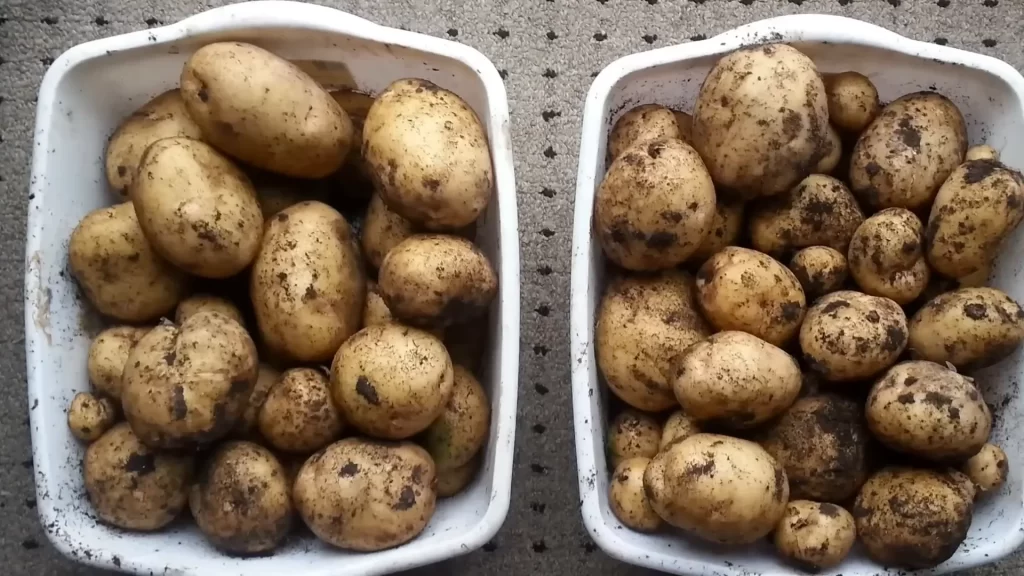
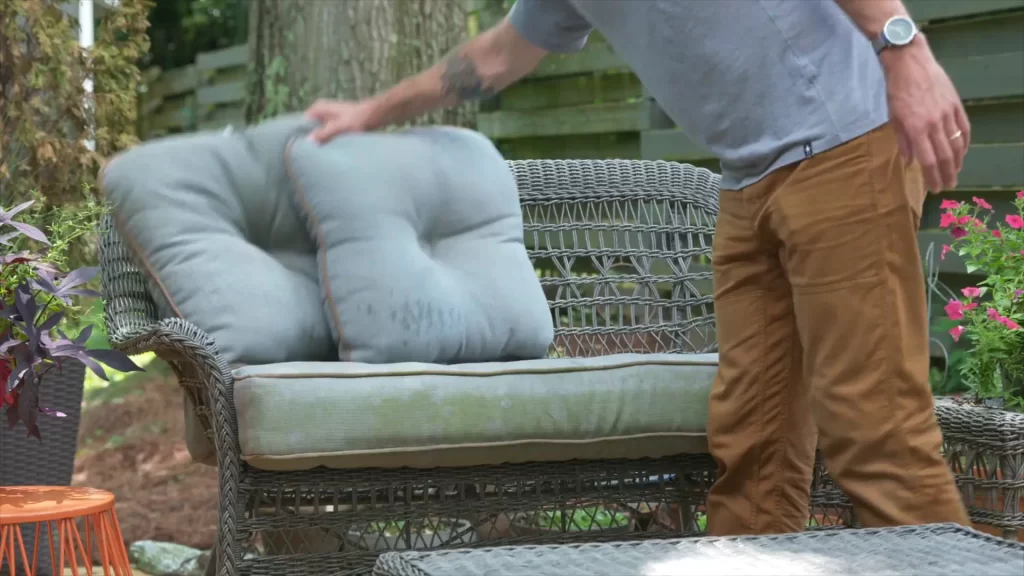
An impressive share! I’ve just forwarded this onto a co-worker who has been conducting a little homework on this.
And he in fact ordered me breakfast due to the
fact that I discovered it for him… lol. So let me reword this….
Thank YOU for the meal!! But yeah, thanks for spending the time
to talk about this topic here on your web page.
I used to be recommended this website by means of my cousin. I’m now not sure
whether or not this publish is written by him as nobody else realize such
specified approximately my problem. You’re amazing!
Thanks!